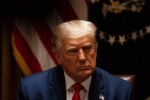DeepSeek Reflects Both the Success and Failure of US Tech Containment Against China
In recent years, the United States has significantly expanded its use of export controls to contain China’s rise and maintain its own technological dominance. At the center of this tech containment are restrictions on the export of advanced semiconductors, which is explicitly aimed at “maintaining as large of a lead as possible” for the U.S. over China in artificial intelligence (AI). The Biden administration launched several rounds of comprehensive controls over China’s access to advanced AI chips, manufacturing equipment, software, and talent. The underlying rationale is straightforward: by denying access to advanced U.S. chips and the hardware and software China would need to develop its own, the United States can “choke off China’s access to the future of AI.”
This strategy initially appeared effective, with OpenAI and other leading U.S. companies maintaining a comfortable edge over their Chinese counterparts. Then came DeepSeek and its latest V3 and R1 models. They appear to have closed the performance gap with leading U.S. models, challenging the idea of a U.S. monopoly over advanced AI models. DeepSeek has thus sparked intense debate about the tech containment policy’s effectiveness. While AI leaders such as Dario Amodei and Miles Brundage quickly argued that DeepSeek’s success did not represent a failure of export controls but rather evidence that restrictions should be strengthened, the development has raised serious questions about the long-term viability of such policies.
Proponents of U.S. export controls argue that DeepSeek actually demonstrates the success of the U.S. policy. The company’s founder, Liang Wenfeng, has openly acknowledged........© The Diplomat






















 Toi Staff
Toi Staff Tarik Cyril Amar
Tarik Cyril Amar Andrew Mitrovica
Andrew Mitrovica Sharona Margolin Halickman
Sharona Margolin Halickman Rachel Marsden
Rachel Marsden Patrick Gathara
Patrick Gathara Belen Fernandez
Belen Fernandez Gideon Levy
Gideon Levy Alexey Kupriyanov
Alexey Kupriyanov
